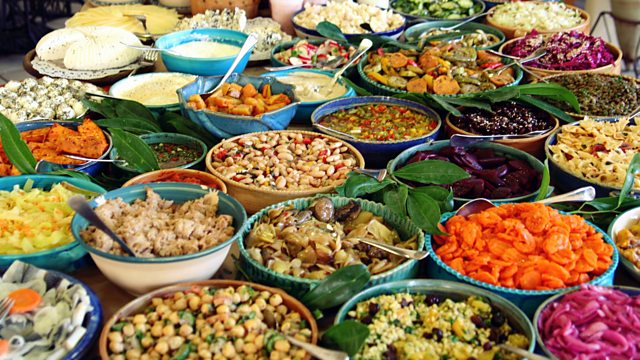Introduction: Syrian Cuisine
Syrian cuisine is a fusion of various Middle Eastern and Mediterranean flavors, reflecting its cultural diversity and long history of trade and migration. Syrian cuisine is known for its rich blend of spices and herbs, with a focus on fresh ingredients and flavorful combinations. It is an essential part of Syrian culture, with food playing a vital role in social gatherings and family events.
The Influence of the Mediterranean Region
The Mediterranean Sea has been a vital trade route for thousands of years, connecting different cultures and civilizations. Syrian cuisine has been influenced by these Mediterranean flavors, with a focus on fresh seafood, olives, and olive oil. In addition, the use of fresh herbs such as thyme, oregano, and parsley is also prevalent in Syrian cuisine, reflecting the influence of Mediterranean flavors.
Common Mediterranean Ingredients in Syrian Cuisine
Olive oil is a staple in Syrian cuisine, used for cooking and as a condiment. Syrian cuisine also features a variety of fresh vegetables such as eggplant, tomatoes, and zucchini, which are often roasted or grilled. Fresh herbs such as mint, parsley, and thyme are also commonly used. In addition, Syrian cuisine features a range of grains, including rice, bulgur, and couscous.
The Role of Spices and Herbs
Syrian cuisine is known for its rich blend of spices and herbs, which are used to add depth and complexity to dishes. The use of cumin, cinnamon, and cardamom is common, as well as the use of fresh herbs such as mint, parsley, and thyme. Spices are often used in combination with herbs to create a unique flavor profile.
Traditional Dishes with Mediterranean Flavors
There are many traditional Syrian dishes that feature Mediterranean flavors, including tabbouleh, a salad made with bulgur, tomatoes, parsley, and mint. Another popular dish is kibbeh, a meatball made with ground beef or lamb, bulgur, and spices. Syrian cuisine also features a variety of stuffed vegetables such as grape leaves, zucchini, and eggplant, which are stuffed with a mixture of rice, herbs, and spices.
Fusion Cuisine: A Modern Twist on Syrian-Mediterranean Cuisine
In recent years, there has been a rise in fusion cuisine, with chefs incorporating Mediterranean flavors into traditional Syrian dishes and vice versa. For example, a popular dish is shakshuka, a Mediterranean dish that features eggs poached in a spicy tomato sauce, which has been adapted to include Syrian spices and herbs. Another popular fusion dish is the falafel wrap, which combines Syrian falafel with Mediterranean ingredients such as hummus and tzatziki sauce.
In conclusion, Syrian cuisine has been influenced by Mediterranean flavors, with a focus on fresh ingredients and flavorful combinations. The use of spices and herbs adds depth and complexity to dishes, while fusion cuisine has brought a modern twist to traditional Syrian-Mediterranean cuisine. Syrian cuisine is a true reflection of the country’s cultural diversity and rich history.

